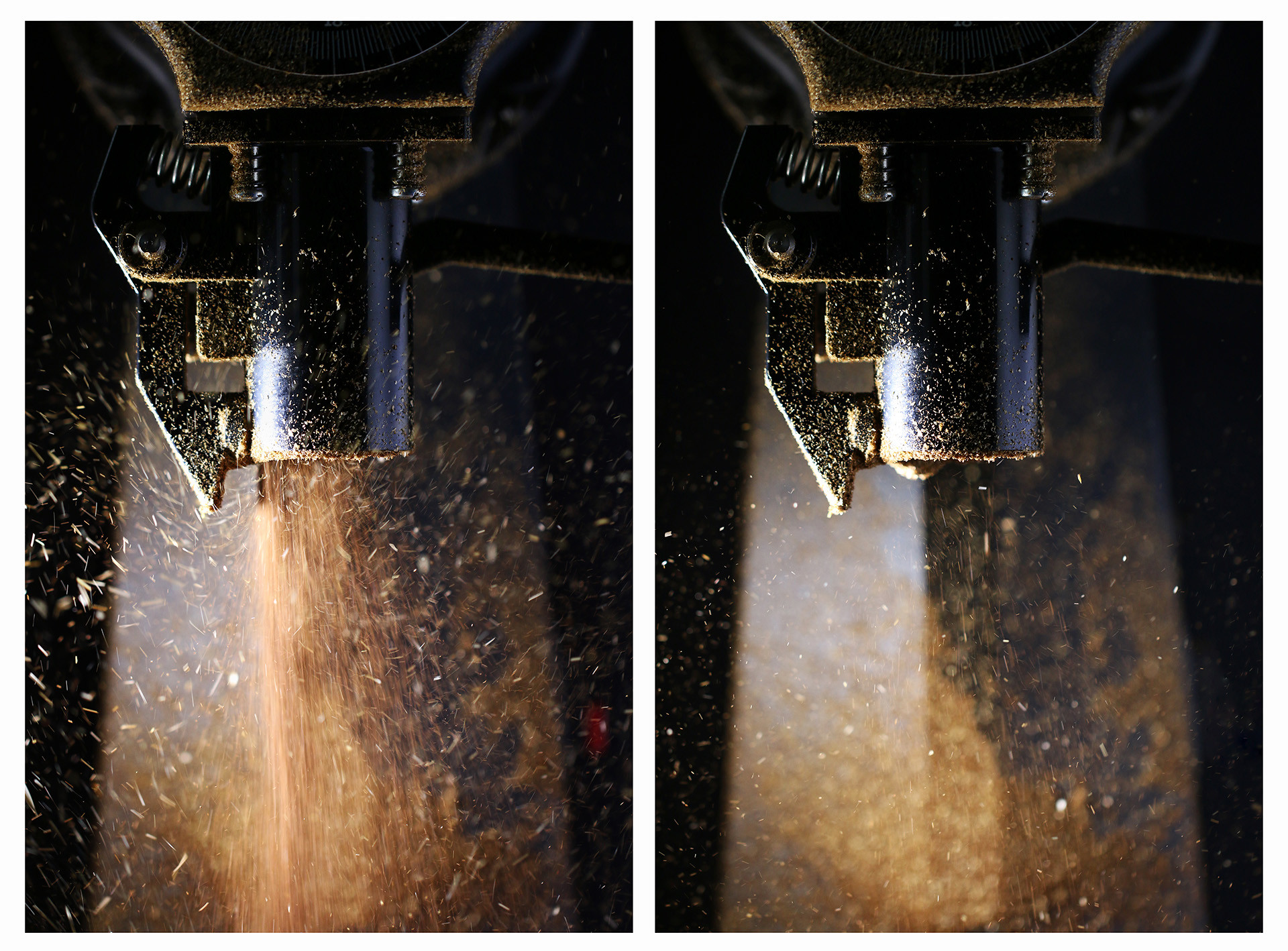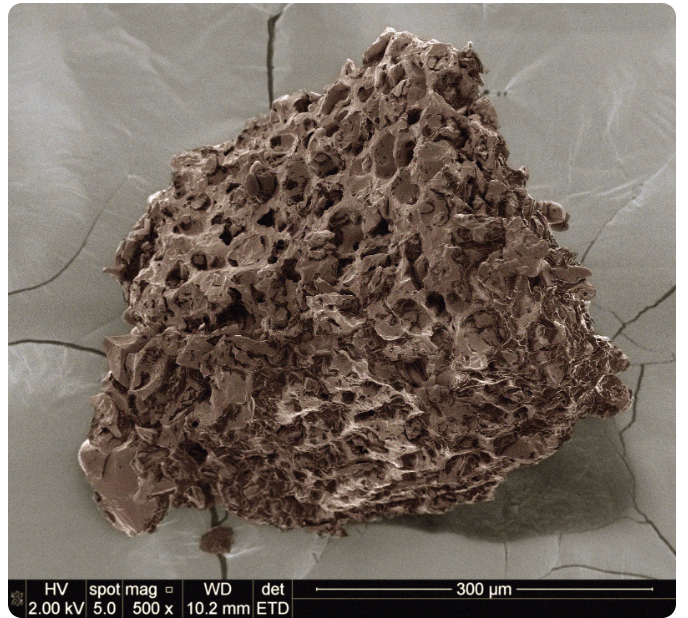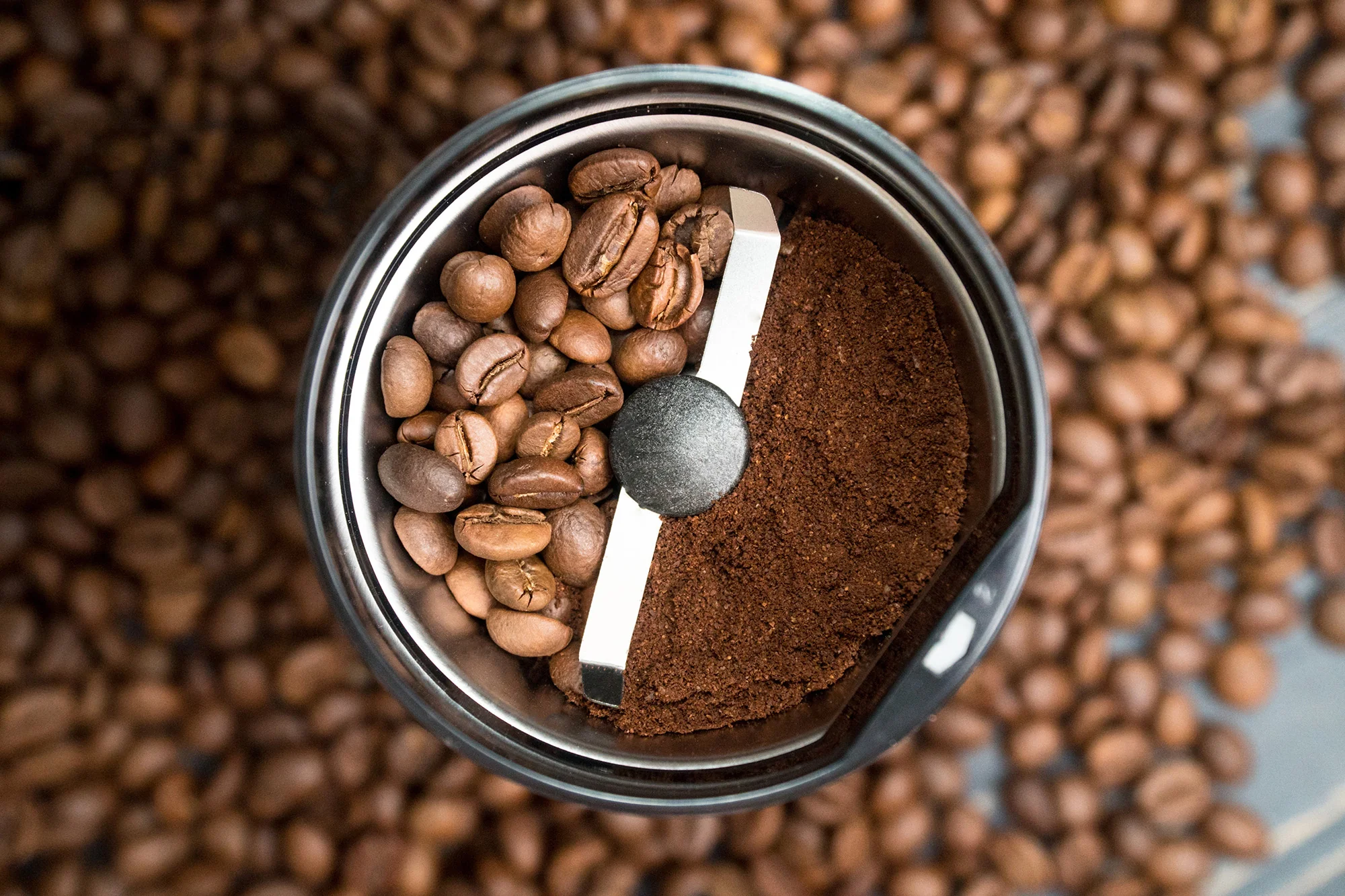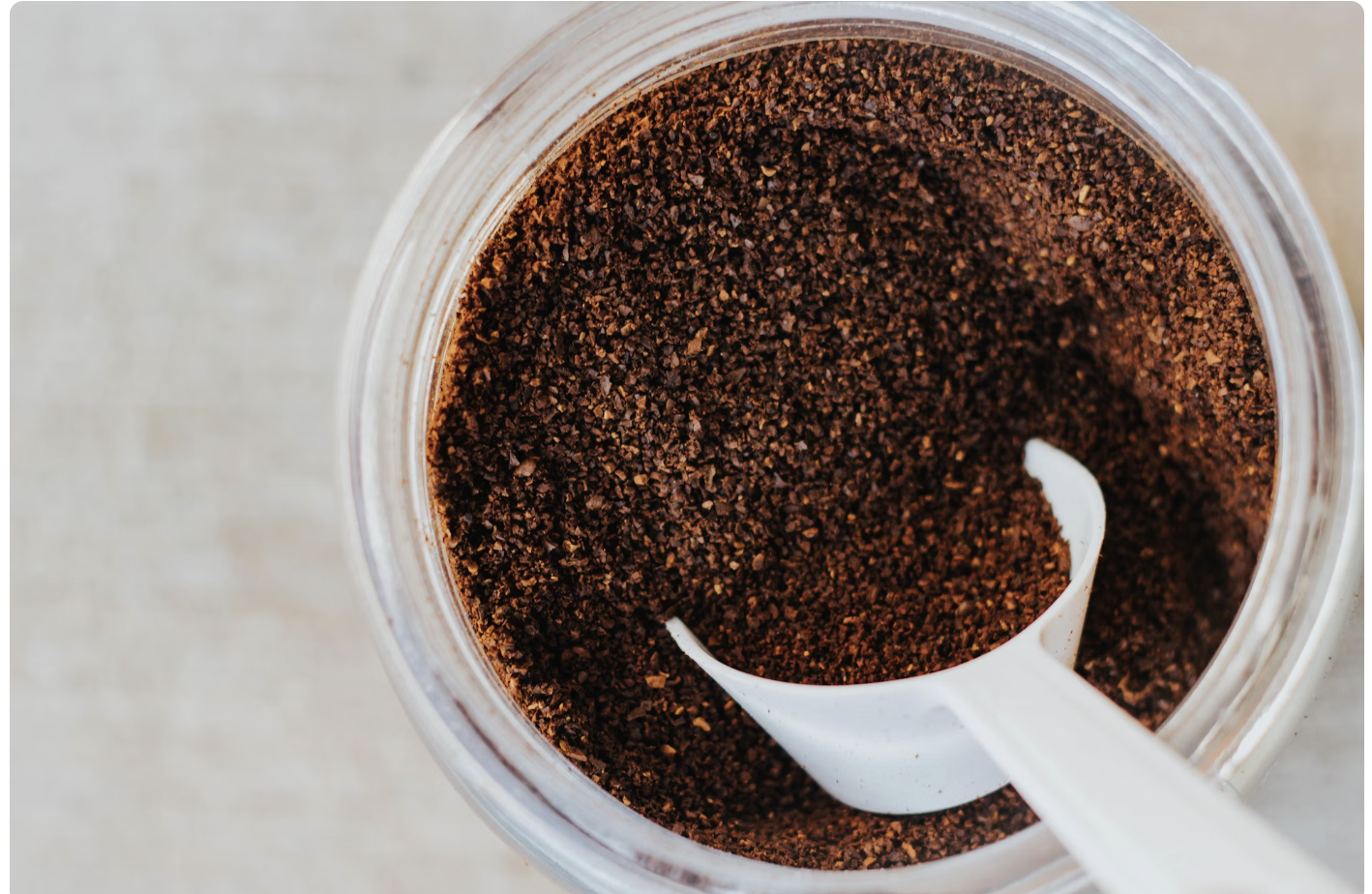Fine grains: Advantage & Disadvantage
If there are too many “micro” particles, there will be two related risks: First, they can clog the gaps between larger particles, significantly increasing the water penetration time or even stagnating the extraction process. Second, these microscopic particles can pass through the filter to follow the extract and create a sediment layer in the cup while also affecting the taste perception. Such particles are called Fine – and are one of the main problems when grinding
“Although there is no general standard for the size of fine, however, according to Britta Folmer (The Craft and Science of Coffee) particles smaller than 0.1 mm (100 micrometers) are called fine”.
It is almost impossible to prevent the presence of fine particles in the coffee grinding process. Part of it depends on the equipment. On the other hand, when coffee beans break or crack, they will release (slough off) the particles, finer than 0.1 mm. This happens repeatedly until the coffee beans reach the required fineness. Therefore, after grinding, fine can increase by about 10 – 50% by weight, depending on the previous coffee bean size.

In most cases, the distribution around the average particle size should be as narrow as possible, meaning that all particles will be similar in size. Espresso may be the only exception. Here, a certain proportion of fine particles is considered necessary to achieve pressure resistance, in order to create a body character and a delicate crema layer in the extract, despite the short extraction time.
So that particles that are too fine do not enter the extract and form a sediment that can be felt on the user’s tongue. Its minimum particle size is about 0.05 mm (50 micrometers) – The Craft and Science of Coffee
Factors affecting the grinding process
The specific properties of coffee beans greatly affect the results of its grinding process. For example, people should never grind hot (warm) coffee beans right after roasting, when the beans are still too soft, under the friction of the grinder, they will break and flatten. Therefore, it is best to grind coffee beans after they have cooled, becoming harder and more brittle. Understanding the differences in particle properties allows us to make adjustments in the grinding process and thus achieve the desired particle size. These differences include:
Humidity
As pointed out, the moisture content and moisture state in roasted coffee beans is the decisive factor that affects the results of the grinding process.
However, when talking about humidity, we need to know that it includes the remaining moisture from green coffee (about 1 to 2% after roasting) and a portion of re-humidity (air humidity reabsorbed by coffee beans). absorption) after roasting. Because the moisture reabsorption process occurs from the outside in, it will first moisten the grain surface before penetrating the grain structure. This is why there needs to be a resting period between roasting and grinding, to ensure the moisture can be evenly redistributed inside the coffee bean by diffusion.
For coffee beans, moisture is the main factor that affects the effectiveness of the grinding process
“After roasting, the minimum resting time before grinding coffee is 6 to 12 hours. If the coffee bean has a moisture content greater than 6% it becomes elastic and more difficult to grind even after a long resting period (Baggenstoss et al., 2008).”
Roasting level
The degree of roasting, can be indicated by the color of the roast; in general, the darker the roast, the easier the grinding process.
The longer the roasting process goes on, the more dehydrated the beans become, the more brittle and fragile they become. Therefore, the darker the roasts, especially when obtained in a short roasting time, the smoother the grinding process. However, it will entail a relatively wide PSD ratio and a large amount of Fines particles. For coffee that is roasted lighter and has higher moisture content, the grinding results are better with high uniformity, in return for greater energy consumption for the equipment. On the other hand, the slower the coffee beans are roasted, the more uniform the bean texture and the higher the pore size and density. Therefore, when grinding, they easily give more consistent results.
Some studies also show that the oil (lipid) in coffee may also be pushed to the surface, especially after dark roasting and speeding up the grinding of beans (but the impact is not significant). . Therefore, the oil also needs time to move back inside and ensure a more consistent grinding process.
Brittleness of the grain (brittleness)
This completely depends on the natural origin of the coffee. More specifically, the porosity or hardness of the beans before grinding depends significantly on the characteristics of the coffee variety itself, where it is cultivated and processed. With the same roast level, coffee beans from a new crop (trees bearing fruit for the first time) produce fewer fine beans than coffee beans from perennial trees (coffee beans from Arabica and Robusta varieties differ in particle size distribution). Because the higher the coffee tree grows above sea level, the bean structure is thicker, denser and harder than beans from trees cultivated at lower altitudes.
Temperature
The friction created during the grinding process generates a large amount of heat, which means that in a working grinder, coffee temperatures can reach 100°C (M Petracco, 2005). Typically, the intuitive explanation given for this is that the metal parts of the blender expand at higher temperatures, increasing the distance between burrs and letting in particles larger than the set up
However, this is not entirely true, as the expected expansion of the metal for such a small temperature change will be negligible. Instead, what is actually happening is that the increase in temperature is making the coffee more pliable and less brittle, changing the way it fragments & grinds into particles (E Uman et al., 2016).
According to Illy’s Espresso Coffee: The Science of Quality (M Petracco, 2005 ), Coffee oils are very viscous at room temperature, but they start to become more fluid above 40°C. When this happens, the oil can easily flow out from the beans through microscopic cracks and coat the outer surface with a sticky layer, the coffee powder becomes “sticky” like loose soil (clumping). The extraction process of these particles is uneven and poses a risk of channeling in Espresso.
High temperatures during the grinding process can also increase the rate of deaeration and oxidation, even in the short time the coffee has to pass through the grinder. Coffee powder inside the grinding chamber can reach temperatures as high as 80 – 100°C (M Petracco, 2005) so it can lose a lot of aroma.
Grind coffee for different brewing techniques
Different coffee extraction methods can be distinguished (or characterized) by: Contact time between water and coffee, (e.g. 30 seconds for Espresso vs. 3 minutes for Pour over); Water pressure (9 bar for Espresso) and finally water temperature, (e.g. 94oC for drip and 12oC for Cold brew.
In addition to time, pressure and temperature, all different extraction methods require grinding the coffee to a specific grain size (which is approximate). Thereby, it ensures a certain water flow (i.e. the time the water is in contact with the coffee) and the desired coffee extraction. The longer the contact time of water and coffee, the coarser the coffee should be ground. Very fine particles can lead to over-extraction, increasing the bitterness of the coffee. However, when the extraction time is very short like for Espresso coffee, we need finer & smaller particles to ensure the necessary flavors are still dissolved.
 Grain size when grinding Espresso coffee (approximate reference) Coffee bean size for filter, drip, pour-over methods (approximate)
Grain size when grinding Espresso coffee (approximate reference) Coffee bean size for filter, drip, pour-over methods (approximate)
With Espresso each extraction takes 20 to 30 seconds per cup (30-45ml) so the coffee must be ground finer. In each coffee grind for Espresso, one gram of coffee contains about 500,000 ground coffee beans – 20 times finer than regular finely ground coffee. On the other hand, Espresso’s unique feature is an extraction system consisting of many phases (it is a dissolved solution, an emulsion, a suspension and a foam), so controlling the fineness of the granules becomes much stricter and more complicated to ensure preserves unique flavor properties. In general, grinding coffee for Espresso depends a lot on the specific circumstances of the coffee bean, how it combines with the brewer and the barista’s skills.
There is virtually only one brewing method that requires the particle size to be reduced to a finer level than that required for Espresso – Turkish Coffee, a popular beverage among Moslem cultures in Arabia. Arabic and Indonesian.
Reference source:
- The Coffee Brewing Handbook, by Specialty Coffee Association Of America; Chapter 5. Grind
- The Craft And Science Of Coffee, by Britta Folmer; Chapter 13. The GrinddParticles and Particularities
- Craft Coffee, by Jessica Easto; Chapter 1. Brewing Basics, Grind Size and Contact Time.


 Grain size when grinding Espresso coffee (approximate reference) Coffee bean size for filter, drip, pour-over methods (approximate)
Grain size when grinding Espresso coffee (approximate reference) Coffee bean size for filter, drip, pour-over methods (approximate)



